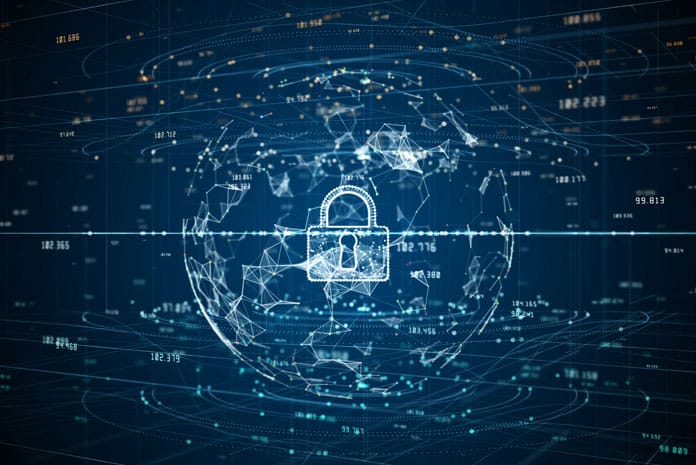Written By: Vishal Salvi, Chief Information Security Officer & Head of Cyber Security Practice – Infosys
Across industries, the modern-day enterprise has several macro challenges and aspirations. Business environments are changing due to new technological developments, changes in regulations, and customer demands. Enterprises want to sense and respond quickly, frequently, and almost instinctively to disruptions in the business environment, similar to how living beings respond to stimuli or changes in their environment. Taking inspiration from nature, we created the concept of a ‘live’ enterprise, an organization that continuously learns, evolves, and is intuitive in its response to its environment.
To be a live enterprise, business leaders must invest in digital technologies to add new capabilities such as being ‘alive’, observable, agile, sentient, connected, and innovative. However, capabilities alone will not bring the change we need. These must be complemented with a shift in mindset – moving from a traditional, transactional, liner, static, monolithic, and mega approach to one that is interactive, multi-dimensional, interconnected, sentient, and agile.
The new mindset
A live enterprise must make several shifts in its approach to how it functions. Several dimensions like system design, user experience concepts, process design need rethinking. For example, when dealing with customers, the experience delivered needs to pivot holistically around interactions instead of looking at it per transaction. Processes need to evolve from being linear that operate within the enterprise to non-linear processes powered by an ecosystem that provides the desired flexibility. Systems of intelligence need to move from static or hardcore rules to continuously learning and evolving systems. Monolithic applications must give way to a platform-based approach to building applications where micro capabilities can be pulled together in a modular way. The underlying idea behind these changes would be to move away from making big-bang mega changes and instead focus on making micro or incremental changes in an agile manner to ensure enterprises stay relevant.
The newly-defined enterprise is highly complex and dynamic, raising the question of – How do we protect this live enterprise?
Applying the new mindset to cybersecurity
Enterprises have traditionally taken a narrow view of cybersecurity, building islands of security systems that are no longer adequate. It is time for cybersecurity to be viewed in the context of the new mindset adopted by live enterprises. To align with the characteristics of a live enterprise, organizations must build the following capabilities in their cybersecurity.
Build observability: Security requires observation of data for analysis and deciding the next best actions, which are critical for keeping threats at bay. Finding meaningful interconnections from data collected from multiple sources as well as the context of historical behavior data could help identify intent and behavior patterns. To create a holistic picture of the security posture, enterprises must build observability into their entire IT stack including infrastructure, applications, platforms, and business processes. Monitoring individual transactions is inadequate; to build a complete picture, enterprises must learn to connect the dots by studying the nature of the interaction across systems.
Be Sentient: With continuous observation comes learning and knowledge that helps build sentience in the organization. A sentient enterprise continuously observes, senses, responds, learns, and evolves to keep pace with the changes in the environment. It must build the capability to monitor and receive threat intelligence that are relevant to its current operations and environments for alerting and blocking any malicious attacks.
Observability must be accompanied by intelligence that can deep dive into causes to find potential vulnerabilities and disguised attacks.
Assume Zero Trust: With multi-cloud and SaaS proliferating every modern enterprise, processes are decentralized, and infrastructure, database, and applications are distributed across the organizational boundaries. With external suppliers, partners, and vendors interacting with enterprise applications, safety practices must extend beyond the perimeter of the organization. Zero trust is about operating under the assumption that your business is operating in a distributed environment and trust is a vulnerability. It is a framework that helps organizations adapt to decentralized systems of future.
Create an Ecosystem of Partners: The complexity of the existing IT landscape requires an entire ecosystem of cybersecurity solutions and partners to protect it. No single solution exists that is adequate for all enterprise security needs and each aspect of security, such as endpoint management, threat detection, or vulnerability management needs a dedicated solution. Different technology partners specializing in various micro capabilities can be interconnected on a platform to form a robust cybersecurity strategy. State-of-the-art, innovative opensource security solutions that leverage large data sets and AI/ML algorithms must be considered as part of this ecosystem.
Be agile and responsive: Agile processes become imperative to ensure that organizations can respond in time and stay ahead of their competitors. Organizations adopting agile practices such as DevOps for application development need to include security as an integral part of the process. DevSecOps is a security management approach that integrates security considerations into the realm of DevOps. It focuses on embedding security practices early into the application lifecycle instead of keeping them at the tail-end of the release.
In summary, the cybersecurity of a ‘live’ enterprise must be able to sense every threat or vulnerability and respond intelligently and instinctively to minimize impact much like living creatures do to protect themselves from any hazards. It must mirror the same characteristics of a live enterprise – innovative, connected, observable, sentient, alive, and agile – to keep pace with changes in the threat landscape.














